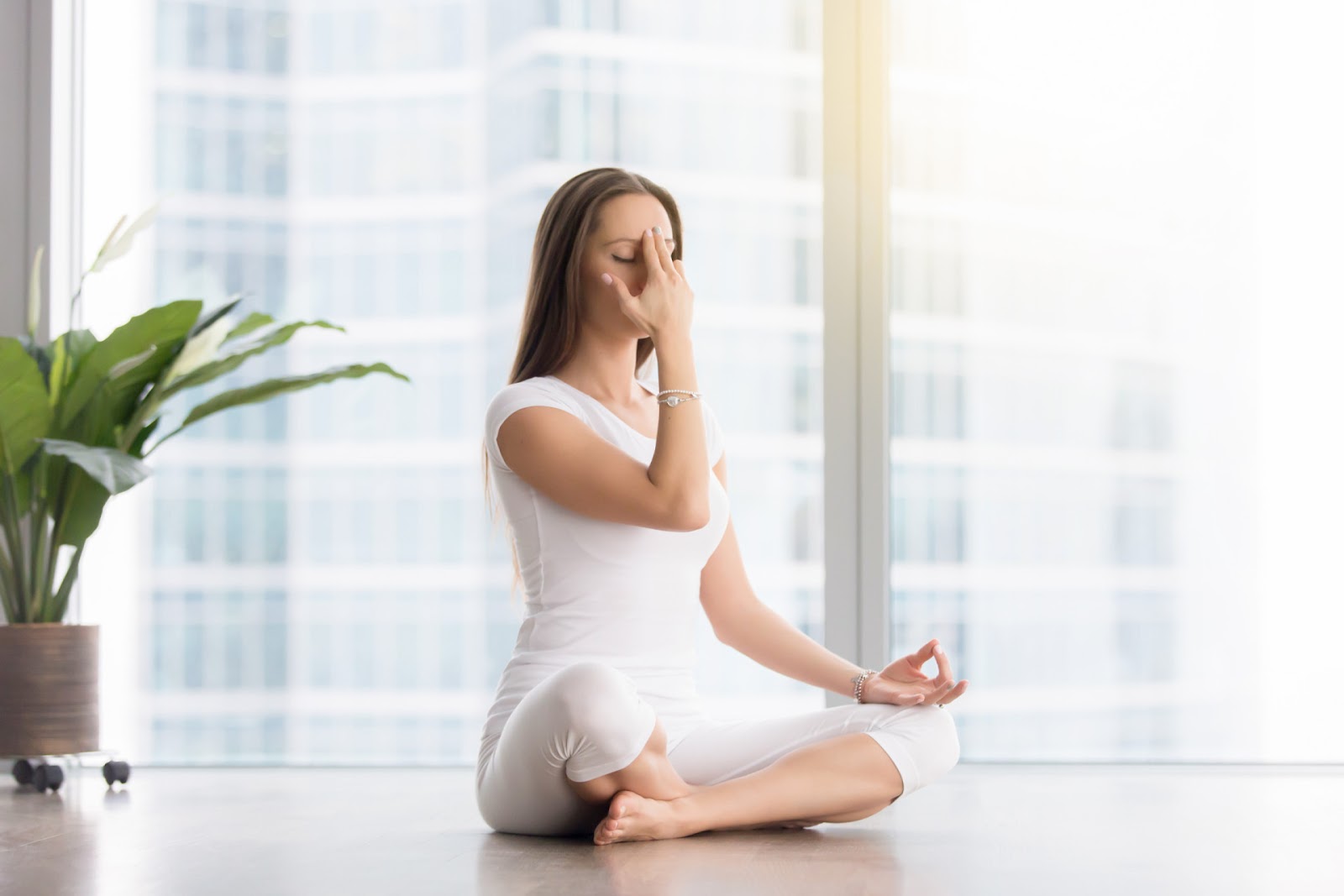Have you ever wondered why people recommend taking a deep breath when feeling anxious? The practice of breathing techniques for anxiety is not just a casual suggestion; it’s a scientifically-backed method to calm anxiety. In this article, we’ll explore various breathing exercises that can help reduce stress and anxiety, making them essential tools in your mental health toolkit.
How Can Breathing Exercises Help Calm Anxiety?
When faced with stress and anxiety, our bodies often react with a “fight or flight” response. This reaction can lead to over breathing, increasing heart rate and blood pressure, which might exacerbate feelings of panic. Deep breathing helps counteract these effects by engaging the parasympathetic nervous system, promoting relaxation and reducing anxiety symptoms.
- Deep breathing techniques are effective because they:
- Slow down the heart rate
- Lower blood pressure
- Increase oxygen flow to the brain
By practicing these techniques regularly, you can train your body to respond more calmly during stressful situations.
Which Breathing Techniques Are Best for Reducing Anxiety?
There are numerous breathing techniques designed to reduce anxiety. Here, we will delve into some of the most popular methods:
What Is Diaphragmatic Breathing?
Diaphragmatic breathing, also known as belly breathing or abdominal breathing, focuses on using the diaphragm rather than shallow chest breathing. This technique ensures that your lungs are fully filled with air, leading to a calming effect on the nervous system.
- To practice diaphragmatic breathing:
- Sit in a comfortable position with shoulders relaxed.
- Place one hand on your chest and the other on your stomach.
- Breathe in slowly through your nose so that your diaphragm (not your chest) inflates with enough air to make your stomach rise.
This simple breathing exercise can be done anywhere and promotes relaxation.
What Is Box Breathing?
Box breathing, or square breathing, is an effective breathing exercise that involves inhaling, holding, exhaling, and holding your breath again—all for equal counts. This technique is particularly useful for those experiencing panic attacks or needing a quick short break from stress.
- Steps for box breathing:
- Inhale slowly through your nose for a count of four.
- Hold your breath for another four counts.
- Exhale slowly through your mouth for four counts.
- Hold your breath again for four counts before repeating.
This method creates a rhythm that distracts from negative thoughts and helps achieve a relaxed state.
What Is Pursed Lip Breathing?
Pursed lip breathing is especially beneficial for individuals with chronic obstructive pulmonary disease (COPD), but it’s also a great anxiety breathing exercise. It helps slow down breathing and promotes relaxation.
- To perform pursed lip breathing:
- Inhale gently through your nose for two counts.
- Purse your lips as if you’re about to whistle.
- Exhale slowly through your pursed lips for four counts.
This technique aids in releasing trapped air in the lungs, improving lung function and helping you feel calmer.
What Is Alternate Nostril Breathing?
Alternate nostril breathing is a yogic breathing practice that balances the left and right sides of the brain, enhancing focus and reducing anxiety. It’s a relaxing breath technique that uses the fingers of one hand to close off alternating nostrils.
- Instructions for alternate nostril breathing:
- Sit comfortably with your left hand resting on your knee.
- Use your right thumb to close your right nostril and inhale deeply through the left nostril.
- Close the left nostril with your right ring finger while releasing the right thumb, then exhale through the right nostril.
- Inhale through the right nostril, then close it with your right thumb and release the left nostril to exhale.
This method can be practiced daily to promote relaxation and balance within the body.
What Is Coherent Breathing?
Coherent breathing involves pacing your breath to around five breaths per minute, which has been shown to lower stress levels and increase feelings of calmness. This paced breathing aligns with the natural rhythm of your heart and can be particularly helpful for healthy adults looking to relieve stress.
- Practice coherent breathing by:
- Inhaling slowly through your nose for a count of six.
- Exhaling slowly through your nose for a count of six.
- Repeat this cycle, gradually increasing the duration as you become more comfortable.
What Is Lion’s Breath?
Lion’s breath is a fun and engaging yogic breathing technique that releases tension and promotes relaxation. It involves a forceful exhalation that mimics a lion’s roar.
- To do lion’s breath:
- Sit in a seated position with your hands on your knees.
- Inhale deeply through your nose.
- Open your mouth wide, stick out your tongue, and exhale forcefully while making a “ha” sound.
This technique can be invigorating and is excellent for clearing the mind of negative thoughts.
Why Does Deep Breathing Help Reduce Anxiety?
Deep breathing helps reduce anxiety by activating the relaxation response in the body. When you breathe deeply, you send a message to your brain to calm down and relax. The brain then sends this message to your body, resulting in lower muscle tension and decreased heart rate.
- Benefits of deep breathing include:
- Increased oxygen supply to the brain
- Reduced levels of stress hormones
- Enhanced mood and energy levels
Deep breathing techniques can be incorporated into daily activities, such as watching TV or taking a short break at work, to maintain a relaxed state throughout the day.
How Can You Incorporate Breathing Techniques Into Your Daily Life?
Integrating breathing techniques into your daily routine doesn’t have to be complicated. Even adding a few additional minutes of deep breathing each day can make a significant difference in how you handle stress and anxiety.
- Tips for incorporating breathing techniques:
- Start with a simple breathing technique like diaphragmatic breathing.
- Set aside time each day for practice, even if it’s just five minutes.
- Combine breathing exercises with other relaxation techniques, such as meditation or yoga.
Remember, consistency is key. The more you practice these techniques, the better equipped you’ll be to manage anxiety when it arises.
What Should You Do If Breathing Techniques Don’t Work?
While breathing techniques are highly effective for many people, they may not work for everyone. If you find that these methods don’t alleviate your anxiety, consider seeking professional help. Therapy and medication are viable options for managing anxiety disorders.
- Signs you might need professional help:
- Persistent feelings of anxiety that interfere with daily life
- Panic attacks that occur frequently
- Difficulty controlling negative thoughts
It’s important to remember that asking for help is a sign of strength, not weakness.
Conclusion: How Can Breathing Techniques Improve Your Life?
Breathing techniques for anxiety offer a practical and accessible way to manage stress and promote relaxation. By practicing these methods regularly, you can improve your overall well-being and develop healthier coping mechanisms for life’s challenges.
Whether you choose diaphragmatic breathing, box breathing, or any other technique, the goal is to find what works best for you. With patience and persistence, you can harness the power of your breath to lead a calmer, more balanced life.
Works Cited
- Brown, Richard P., and Patricia L. Gerbarg. The Healing Power of the Breath: Simple Techniques to Reduce Stress and Anxiety, Enhance Concentration, and Balance Your Emotions . Shambhala Publications, 2012.
- Harvard Health Publishing. “Relaxation Techniques: Breath Control Helps Quell Errant Stress Response.” Harvard Health, www.health.harvard.edu/mind-and-mood/relaxation-techniques-breath-control-helps-quell-errant-stress-response .
- Jerath, Ravinder et al. “Physiology of Long Pranayamic Breathing: Neural Respiratory Elements May Provide a Mechanism That Explains How Slow Deep Breathing Shifts the Autonomic Nervous System.” Medical Hypotheses , vol. 67, no. 3, 2006, pp. 566–571.
- National Institute of Mental Health. “Anxiety Disorders.” U.S. Department of Health and Human Services, www.nimh.nih.gov/health/topics/anxiety-disorders/index.shtml .
- Streeter, Christopher C. et al. “Effects of Yoga Versus Walking on Mood, Anxiety, and Brain GABA Levels: A Randomized Controlled MRS Study.” Journal of Alternative and Complementary Medicine , vol. 16, no. 11, 2010, pp. 1145–1152.
Ready to take the first step towards a healthier, happier you? At Ny Choice Medical, we believe that personalized care and comprehensive medical solutions are the keys to unlocking your best life. Whether you’re seeking expert advice, advanced treatment options, or simply a trusted partner in your health journey, our dedicated team is here to support you every step of the way. Don’t let uncertainty hold you back—visit NYChoiceMedical.com today to explore our wide range of services tailored just for you. Your path to wellness starts with one click.
Frequently Asked Questions (FAQ) About Breathing Techniques for Anxiety
2. How Long Should I Practice Breathing Techniques Each Day?
There’s no strict rule about how long you should practice breathing techniques, but consistency is key. Even five to ten minutes a day can make a significant difference. Start with shorter sessions if you're new to these exercises, then gradually increase the duration as you become more comfortable. Incorporating deep breathing into your daily routine—such as while watching TV, taking a short break at work, or before bed—can help reinforce its benefits.
- Example Routine : Begin with a simple breathing technique like box breathing for five minutes in the morning and evening.
3. Can Children Use Breathing Techniques to Reduce Anxiety?
Yes, children can absolutely benefit from breathing techniques to reduce anxiety. In fact, teaching kids simple breathing exercises early on can equip them with lifelong tools for managing stress. Techniques like lion's breath or balloon breathing (imagining their stomach is a balloon that inflates and deflates) are fun and easy for children to follow. These methods help calm their nervous system and distract them from negative thoughts.
Fun Idea : Have your child pretend they’re blowing bubbles or roaring like a lion to make the exercise enjoyable.
4. Is It Normal to Feel Uncomfortable When Starting Breathing Exercises?
Yes, it’s normal to feel slightly uncomfortable or awkward when first starting breathing exercises. Many people aren’t used to focusing on their breath or engaging their diaphragm fully. At first, you might notice sensations like tingling, lightheadedness, or even mild discomfort. However, these feelings usually subside with practice. If you ever feel too uncomfortable, pause and return to normal breathing until you feel ready to try again.
Advice : Go slowly and avoid forcing your breath. Gradually build up to deeper and longer breaths.
5. Do Breathing Techniques Work for Everyone, or Are They Just Placebos?
Breathing techniques are not placebos; they have been scientifically proven to affect the nervous system and promote relaxation. By activating the parasympathetic nervous system, deep breathing slows down the "fight or flight" response triggered by stress and anxiety. While some people may see quicker results than others, most individuals report feeling calmer after consistent practice. That said, if breathing techniques alone don’t work for you, combining them with other relaxation techniques or seeking professional help could be beneficial.

